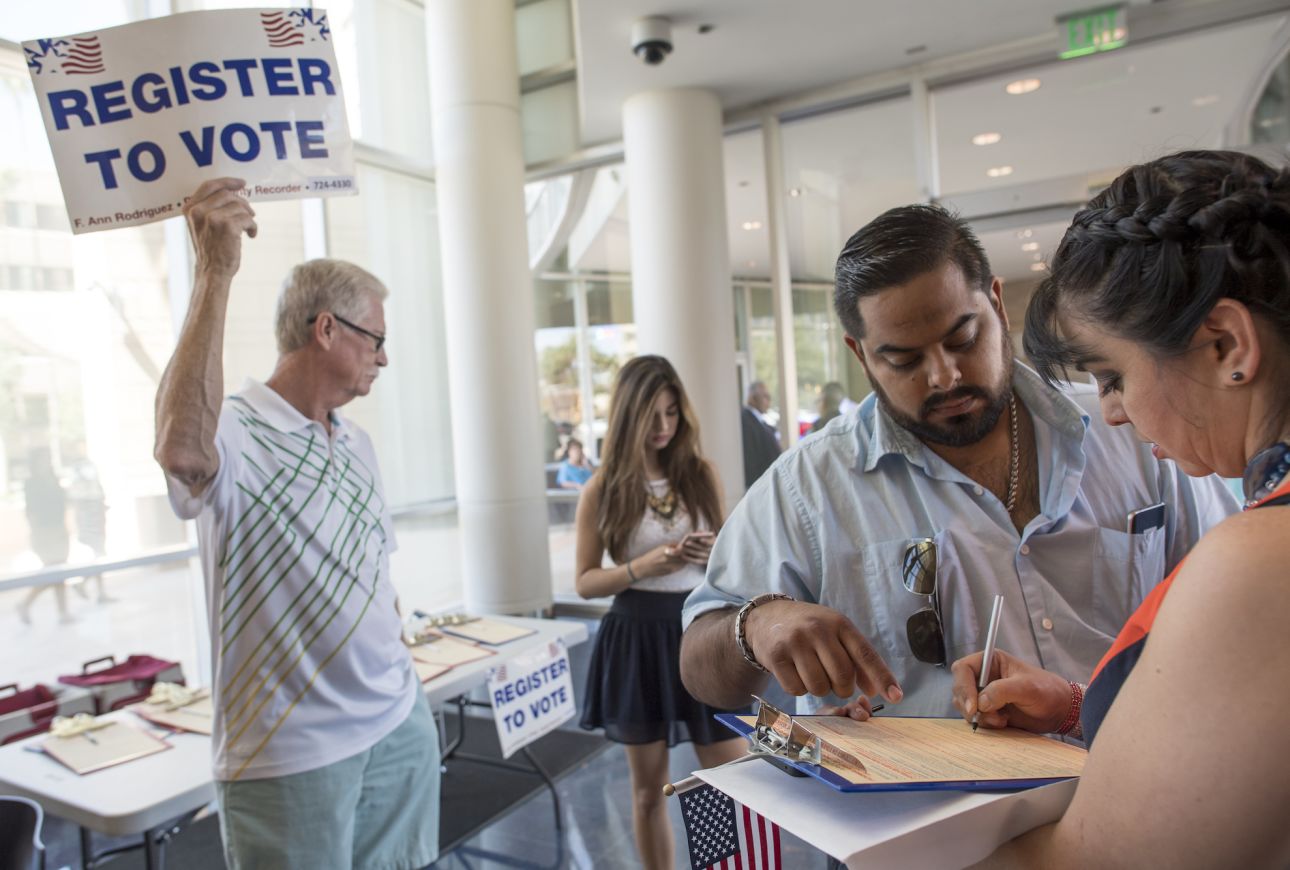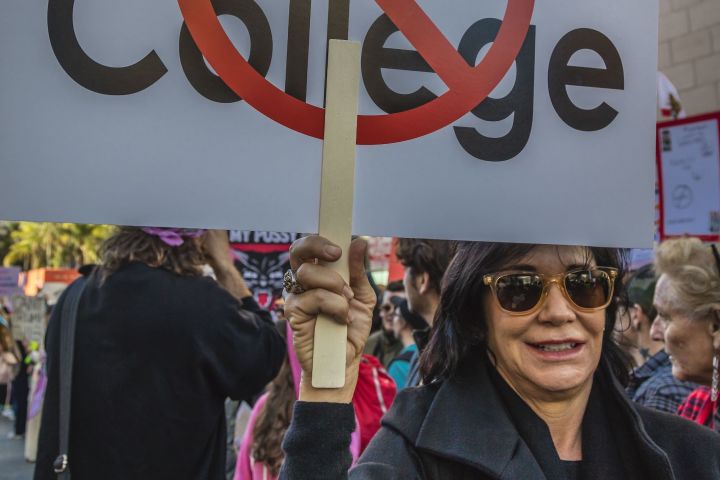IDEA SET
IDEA SET
Get Out the Vote!
Get Out the Vote!
This idea set highlights the processes involved in American elections.
Grades
6 - 9
Subjects
English Language Arts, Geography, Social Studies, Civics

Photograph by David Paul Morris/Bloomberg
Elections are an important part of civic life in a democratic republic. The United States is an example of this system of government. Use this set of classroom ideas to educate students about the rights and responsibilities of U.S. voters and to inspire them to see themselves, already, as active participants in the civic life of their nation.

And the Winner Is ...
It’s time to elect the next president! Hold a mock presidential election by dividing your class into four groups. As a class, review this article on the executive branch to develop a better understanding of the president of the United States’ job description. Then, assign one group as journalists, another as election officials, and the final two as brand-new political parties. Have students in the political party groups select two to three important issues for their platforms. Then have each party nominate a candidate from among the students. Explain that the other students will be campaign staff and will work with the presidential candidate to write a two-minute speech on their ideas for the nation and create a campaign slogan and advertisements. Instruct the journalist group to record a news story covering the campaigns. Have the election officials team set up a classroom polling location, create a ballot box and ballots, and supervise voting. Students may use voting process resources at National Geographic and USA.gov for help in understanding the election process and the roles they have been assigned to play. Finally, have the candidates present their speeches and the class view the media coverage of the campaign. Then, send them to the polls and have the election officials tally and announce the results.

Out With the Electoral College?
Assess student knowledge with this discussion starter: How is the winner in a United States presidential election decided? Does each vote cast by each voter in each state count directly toward one candidate or the other? Introduce students to the role of the electoral college in the U.S. election process with this article. Ask: Why did the Founding Fathers choose the electoral college system? Review the reasons for the electoral college, then see whether students can anticipate some of the criticisms. Next, research and compile a short list of arguments against the electoral college with students. Are these valid criticisms? As difficult as it might be to do so, should the electoral college be abolished? What would we use in its place? Invite students to explore voting processes around the world to learn more about alternatives to the electoral college system. Students can use what they have learned and their own ideas to prepare a written proposal pitching an alternative election process for the United States.

Vote Yes/No on Question 1
A ballot initiative is a proposed law written by citizens, which can be placed on the ballot to be accepted or rejected by voters. Have students use this interactive map of ballot measure results from the 2016 election. Ask students to explore the map and jot down at least 10 ballot initiatives from 10 different states. Ask: What ballot initiatives appeared during the 2016 election? Which passed? Are there any measures students would have supported or rejected had they been able to vote in that election themselves? Explain that the people who created these initiatives had to go through a specific process to get them on the ballot, and that this process differs by state. Assign each student one of the 20-something states that allow for ballot initiatives; have students research and report back to the class on their states’ processes. As a class, create a list of similarities and build a list of generalized steps for getting an initiative on a ballot.
Media Credits
The audio, illustrations, photos, and videos are credited beneath the media asset, except for promotional images, which generally link to another page that contains the media credit. The Rights Holder for media is the person or group credited.
Director
Author
Production Managers
Program Specialists
Producer
Intern
other
Last Updated
March 7, 2024
For information on user permissions, please read our Terms of Service. If you have questions about how to cite anything on our website in your project or classroom presentation, please contact your teacher. They will best know the preferred format. When you reach out to them, you will need the page title, URL, and the date you accessed the resource.
Media
If a media asset is downloadable, a download button appears in the corner of the media viewer. If no button appears, you cannot download or save the media.
Text
Text on this page is printable and can be used according to our Terms of Service.
Interactives
Any interactives on this page can only be played while you are visiting our website. You cannot download interactives.